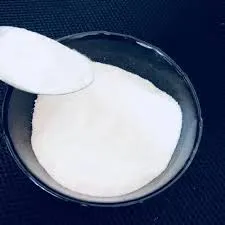
Oct . 15, 2024 04:56 Back to list
hydroxyéthyl cellulose
Hydroxyethyl Cellulose An Overview
Hydroxyethyl cellulose (HEC) is a water-soluble polymer derived from cellulose, which is the main structural component of plant cell walls. It is synthesized through the etherification of cellulose with ethylene oxide, resulting in a compound that retains the backbone of cellulose while introducing hydroxyethyl groups. This modification enhances its solubility in water and broadens its applications across various industries, including pharmaceuticals, cosmetics, food, and construction.
Hydroxyethyl Cellulose An Overview
In pharmaceuticals, hydroxyethyl cellulose is utilized as a binder and controlled-release agent in tablet formulation. Its gel-forming property aids in drug delivery systems, allowing for a gradual release of active ingredients over time. This controlled release can enhance the therapeutic efficacy of medications, improving patient compliance. Furthermore, HEC's non-ionic nature and compatibility with various excipients make it a preferred choice in the formulation of eye drops and other ophthalmic solutions, as it provides needed viscosity and comfort during application.
hydroxyéthyl cellulose

Additionally, hydroxyethyl cellulose finds applications in the food industry. It can be used as a thickener, stabilizer, and emulsifier in a range of food products, such as sauces, dressings, and dairy products. Its role in food not only enhances texture and mouthfeel but also contributes to the shelf-life stability of products by preventing the separation of ingredients.
In the construction industry, HEC serves as an additive in cement-based materials and tile adhesives. Its incorporation improves workability and water retention, making it easier to apply and improving the durability of the final product. The increased viscosity that HEC provides also prevents sagging and provides a uniform application of adhesives, ensuring a strong bond.
Safety is another important aspect of hydroxyethyl cellulose. It is considered non-toxic and biodegradable, making it suitable for a wide range of applications without environmental concerns. Regulatory agencies such as the FDA and EFSA have recognized HEC as a safe food additive, further demonstrating its versatility and wide acceptance.
In conclusion, hydroxyethyl cellulose is a remarkable polymer with a multitude of applications across various industries due to its unique properties. Its ability to function as a thickener, binder, and stabilizer makes it invaluable in formulations ranging from personal care products to pharmaceuticals and food. With ongoing research and technological advancements, the potential applications for hydroxyethyl cellulose are likely to expand, continuing to contribute to innovations in various fields.
-
Versatile Hpmc Uses in Different Industries
NewsJun.19,2025
-
Redispersible Powder's Role in Enhancing Durability of Construction Products
NewsJun.19,2025
-
Hydroxyethyl Cellulose Applications Driving Green Industrial Processes
NewsJun.19,2025
-
Exploring Different Redispersible Polymer Powder
NewsJun.19,2025
-
Choosing the Right Mortar Bonding Agent
NewsJun.19,2025
-
Applications and Significance of China Hpmc in Modern Industries
NewsJun.19,2025







